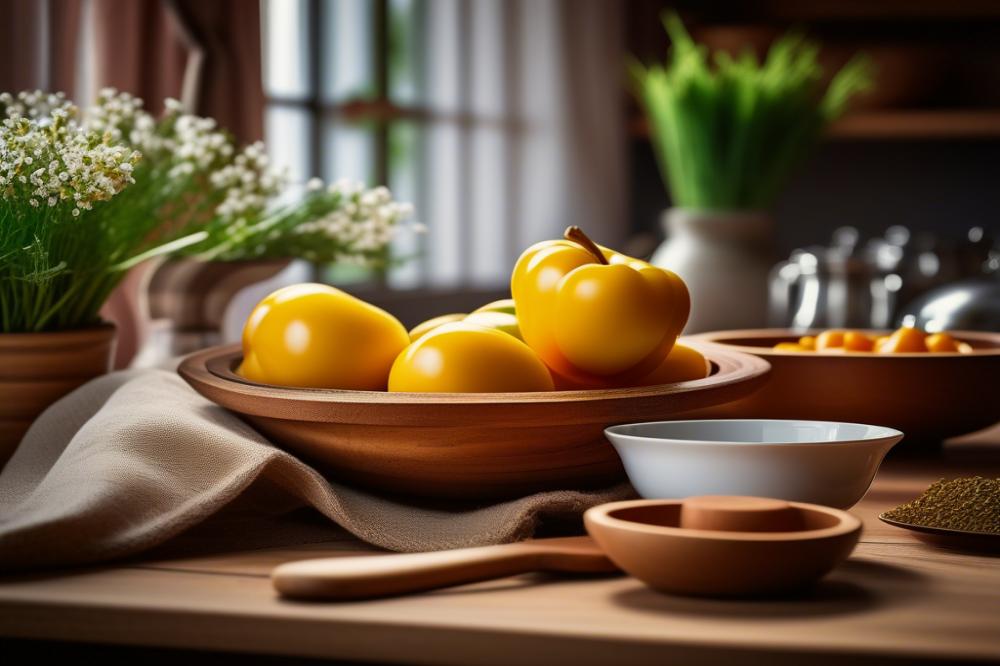Learning to Make Polish Kopytka in a Home Kitchen
Polish Kopytka, a delightful variety of potato dumplings, holds a special place in the heart of Polish cuisine. Families often gather around a table to prepare and share this traditional dish, which brings a comforting warmth to any meal. This recipe is not just a meal; it’s a connection to culture and history. Dumplings can be prepared with various ingredients, but at their core, they reflect the essential spirit of homemade meals.
The dishes we prepare at home often come with a sense of nostalgia. For many, Kopytka is a staple comfort food, celebrated for both its flavor and the memories it evokes. Cooking these delicious dumplings can become a cherished culinary adventure. When visiting Poland, diving into local cuisine adds depth to your experience. Learning to create this dish provides a snapshot of Polish traditions that many visitors cherish.
With an easy recipe to follow, you won’t feel overwhelmed. Kopytka requires simple ingredients and can be made using basic cooking techniques. Step-by-step guidance can help you navigate the process, ensuring a fun experience instead of a chore. Enjoying this dish becomes even more gratifying when you can say you made it yourself.
This article offers kitchen tips that will elevate your cooking skills while making Polish dumplings. So, prepare to roll up your sleeves and embark on a journey right in your own kitchen. Indulging in homemade Kopytka allows you to bring a piece of Poland to your dining table.
Understanding Kopytka
Kopytka, a popular dish in Polish cuisine, translates to “little hooves” in English, aptly named after their shape. These delightful potato dumplings hold a special place in the hearts of many Poles. Family gatherings, holidays, and everyday dinners often feature this traditional dish. Comfort food like kopytka connects people to their heritage and to each other.
The basic ingredients for making kopytka are quite simple. Fresh potatoes, flour, salt, and eggs form the foundation of this easy recipe. However, the magic lies in the details and the cooking techniques that families pass down through generations. Some choose to add ricotta or other cheeses for a creamier texture. Herbs and spices may also enhance flavors, offering unique twists from region to region.
Different areas of Poland bring their own flair to this beloved dish. In southern regions, you might find kopytka served with rich mushroom sauce, while northern parts sometimes pair them with sweet toppings like fruit or brown sugar. Such variations make every encounter with kopytka a new experience. Regardless of the recipe, the warm, comforting nature of these dumplings resonates deeply with anyone who enjoys them.
The history of this dish stretches back centuries. Farmers and home cooks relied on readily available ingredients, turning humble potatoes into a satisfying meal. Kopytka became a staple during harvest season, showing how food like this can nourish body and soul. Learning to prepare this dish not only brings families together but also keeps traditions alive.
For anyone looking to try their hand at kopytka, it is essential to have a clear step-by-step method. This makes it easier to get a great outcome. Kitchen tips such as using starchy potatoes and allowing the dough to rest can dramatically improve texture. Whether you’re a novice cook or more experienced, this dish invites everyone to participate in Polish culinary culture.
Essential Cooking Techniques
To create delicious potato dumplings at home, several cooking techniques are vital. Start with making the dough. Combine cooked, riced potatoes with flour and an egg. These ingredients form the base of your traditional dish. Aim for a soft texture that isn’t too sticky.
Kneading the dough takes practice. Use your hands to mix gently. Ensure the flour is incorporated fully, but be cautious not to over-knead. A light touch helps maintain the delicate nature of the dough. The right consistency is slightly firm but still easy to handle.
Shaping the dumplings comes next. Divide the dough into smaller sections for easier handling. Roll a section into a long log shape, about 1 inch thick. Cut pieces, roughly the size of a thumb. Each piece should appear uniform for even cooking. Try rolling each piece into a small ball, then pressing it gently with a fork to form a distinctive shape.
Cooking them properly is key to achieving the perfect dumpling. Boil a pot of salted water. Drop the dumplings in once the water reaches a rolling boil. Wait for them to float, which indicates they are cooked thoroughly. This simple method is an essential step in the cooking process.
Here are some kitchen tips for perfect potato dumplings. Do not rush through the boiling stage. An extra minute in the water can improve the texture. After removing them from boiling water, briefly sautéing in butter adds flavor and a beautiful golden color.
This easy recipe allows anyone to enjoy the comforts of Polish cuisine right in their kitchen. Always remember that practice helps improve your skills. Make this unique comfort food a staple in your meals, and enjoy every bite of your homemade Kopytka.
Step-by-Step Recipe for Homemade Kopytka
If you are eager to try your hand at making Polish kopytka, this easy recipe is just for you. These beloved potato dumplings are a staple in Polish cuisine and are sure to bring comfort to your dinner table. Follow these instructions carefully, and you’ll be well on your way to crafting this traditional dish in your kitchen.
Ingredients
- 2 pounds of potatoes (preferably starchy, like russets)
- 1 cup of all-purpose flour (plus extra for dusting)
- 1 large egg
- 1 teaspoon of salt
- 1 tablespoon of butter (for frying, optional)
- Chopped herbs (such as parsley or dill for garnish, optional)
Instructions
- Start by peeling the potatoes. Cut them into quarters to make them cook faster.
- Place the potato pieces into a pot and cover them with water. Add a pinch of salt.
- Bring the water to a boil, then reduce the heat. Cook the potatoes until they are tender, about 15-20 minutes.
- Drain the potatoes and let them cool for a few minutes. This is crucial; you want to handle them when they are warm, but not hot.
- Using a ricer or a masher, mash the cooked potatoes in a bowl. Ensure there are no lumps, as a smooth texture is vital for your dumplings.
- Add the egg, salt, and half a cup of flour to the mashed potatoes. Mix carefully, but do not overwork the dough. Overworking creates a dense texture.
- Gradually add more flour until the dough comes together and is no longer sticky. You might need a bit more than a cup, depending on the moisture of your potatoes.
- Lightly flour a clean surface. Turn the dough out and shape it into a log about 1 inch thick. Cut the log into 1-inch pieces to form the dumplings.
- At this point, you can use a fork to create grooves on one side of each dumpling for a traditional look. This helps sauce cling better.
- Bring a large pot of salted water to a boil. Carefully drop the dumplings into the boiling water. Do not overcrowd the pot; work in batches if needed.
- Wait for the dumplings to float to the surface. Once they do, let them cook for an additional 2-3 minutes. This will ensure they are thoroughly cooked.
- Using a slotted spoon, remove the dumplings and set them aside on a plate. If desired, you can sauté them in a pan with some butter until lightly golden.
- Serve immediately, garnished with fresh herbs if you wish. Enjoy your homemade comfort food!
Kitchen Tips
When making potato dumplings, remember to choose starchy potatoes for the best results. Overcooking or undercooking the dumplings can lead to a less-than-perfect texture. Pay attention to the cooking times! If you like, you can experiment by adding ingredients like cheese or herbs directly into the dough. This will give your kopytka a unique flavor twist!
Kitchen Tips for Perfect Kopytka
Making delicious homemade potato dumplings can be a rewarding experience. Start with high-quality ingredients. Starchy potatoes, like Russets, work best. You can also substitute half of the potatoes with sweet potatoes for a different taste. Just be aware that this will change the texture and sweetness of the final product.
When it comes to flour, use all-purpose flour for the most traditional approach. However, if you are on a gluten-free diet, try a blend of potato flour and gluten-free flour. Keep in mind that the mixture might require different amounts of liquids, so add gradually.
Follow these step-by-step instructions carefully while mixing and kneading. Avoid overworking the dough; it should be soft but not sticky. A common mistake is using too much flour. This can lead to tough dumplings. Always flour your hands and the work surface lightly. Each dumpling should have a smooth exterior to cook evenly.
Cooking techniques are crucial as well. Boil water generously in a large pot. When the water is rolling, add the dumplings. They are done when they float to the top. This usually takes around 2-3 minutes. Remove them with a slotted spoon and place them on a plate.
Leftover dumplings can be stored in the refrigerator. Store them in an airtight container for up to three days. To reheat, pan-fry them with a little butter until they get crispy on the outside. This makes for a delicious comfort food treat.
Creative ways to serve include topping with sautéed onions or mushrooms. You can also add a sprinkle of fresh herbs for extra flavor. Consider pairing them with a rich sauce or a dollop of sour cream. A unique twist would be to toss them in a pesto or lightly sauté with garlic and spinach.
Try these kitchen tips to elevate your experience. Making this traditional dish can be simple and fulfilling. Enjoy the journey of cooking and savor the flavors of Polish cuisine!
Exploring Kopytka Variations
Many people enjoy creating different variations of this traditional dish. Kopytka have long been a favorite comfort food. They provide a wonderful base for many toppings and accompaniments. You can make your homemade potato dumplings stand out with just a few simple ingredients.
One popular variation is served with a rich mushroom sauce. Forest mushrooms are often used, reflecting flavors from the local area. This makes the dish not only tasty but also tied to the Polish landscape. Another common option is to pair kopytka with a creamy garlic sauce. This sauce adds a nice depth of flavor and a touch of sophistication.
Moreover, some people like to dress their dumplings with caramelized onions. The sweetness of the onions pairs beautifully with the potato. A sprinkle of crispy bacon or sautéed cabbage can add texture to your meal. Each region in Poland has its own take on this dish, showcasing local tastes and traditions.
Add some fresh herbs to take the flavors even further. Dill or chives can brighten up the plate and bring freshness. Feel free to get creative! You might even consider making a version with grated cheese mixed into the dough. This addition can provide a comforting twist, elevating your simple recipe to something special.
Cooking techniques can also play a role in how kopytka is enjoyed. Some people cook them in broth for extra flavor, while others choose a quick sauté after boiling. Each method brings a different taste experience to the table. Experimenting with these cooking styles can help you discover which you like best.
As you start making your own kopytka, consider trying various toppings. You might prefer a light and zesty sauce or a hearty meat stew over your dumplings. The beauty of this dish lies in its flexibility. Not only can you stick to tradition, but you can also create something unique to your palate.
So, gather in your kitchen and start crafting these delightful potato dumplings. Use these kitchen tips to guide you along the way. Remember, the joy of cooking comes from trying new things and finding what works for you. Cherish the process, and don’t shy away from putting your special spin on a classic Polish dish!
Embracing Polish Culture Through Kopytka
Creating a dish like kopytka in your own kitchen is more than just cooking; it’s an exploration of Poland’s rich culinary tradition. Each step in this homemade recipe brings you closer to understanding the heart of Polish cuisine. The simple act of preparing food can ignite a sense of connection to the culture’s history and those who have come before us.
Imagine gathering ingredients, measuring out potatoes, and mixing them with flour. Feel the warmth and satisfaction of rolling out your dough, cutting it into small pieces, and shaping them with care. This process is not solely about nourishment; it is about creating moments of joy and tradition.
Sharing your finished dish with family and friends can lead to meaningful conversations. Each bite of kopytka serves as a reminder of the ties that bind us. When you introduce someone to this classic Polish dish, you are sharing a piece of a culture and history that deserves to be cherished.
Don’t hesitate to dive into this culinary adventure. Trying your hand at making kopytka offers a delightful blend of flavor and tradition. As your skills grow, so does your appreciation for the subtleties of Polish cooking. You will find that preparing this dish can be a source of pride and joy.
In conclusion, the experience of making kopytka is rewarding in countless ways. It enhances your cooking repertoire and connects you to Poland’s rich heritage. So, roll up your sleeves, gather the ingredients, and embark on this delightful journey. You may discover your new favorite meal while celebrating the beauty of Polish culture.



